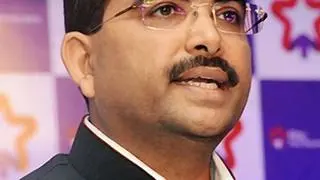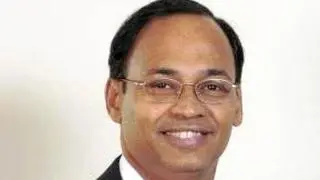After receiving the final payments aggregator (PA) licence, Cashfree Payments is aiming to return to monthly profitability by the end of the current financial year, and full-year profitability in FY25, Co-Founder Reeju Datta told businessline.
Cashfree Payments had posted a profit for four financial years ending FY21 with a PAT of over ₹25 crore, before slipping into the red in FY22. It was then forced to let go 80-100 employees in January 2023.
“We were a consistently profitable organisation barring the last two financial years. So the idea is to get back to that very soon. By next year, we definitely intend to be profitable at an annual level. This year also we’ve been focusing on growth and have invested in product and growth, and are aiming for monthly profitability by the end of the current financial year,” Datta said.
The payments infrastructure platform is one of the six entities to receive the final authorisation from the RBI last week to operate as a payment aggregator.
Transaction growth
“We applied in March 2021 and there was a comprehensive system audit report that is mandated as part of the licensing process. All queries were addressed and the focus has been on adhering to the PA guidelines and ensuring compliance within the organisation,” he said.
The focus is now on regaining lost market share by growing the transaction processing volumes and partnering with both SME and large merchants for payment processing solutions.
“We process around $40 billion annually right now and have been trying to grow 80-100 per cent y-o-y. That was harder in the last financial year, but we want to double down on our numbers. The idea is to touch $100 billion transaction processing in the next 12-18 months,” Datta said.
He added that the company has been witnessing huge onboarding requests, both pending and new ones. Close to 20,000 merchants are ready to go live, of which 8,000 have completed their KYC and Cashfree is “processing them as quickly as we can”. It currently gets around 30,000 leads or new queries every month, which are expected to grow to around 50,000 in six months.
New launch
Growth is expected to be aided by the recently launched FlowWise platform which offers an enterprise-grade end-to-end payments management system, which enables reporting transactions, maximising checkouts, improving revenue, reducing costs and boosting the entire process around reconciliation and settlement.
“This is hard to develop for SME businesses or start-ups because it could take crores of rupees and many years. Even at a large enterprise level, it’s hard to achieve the best practices that we have as a payments processor,” Datta said adding that the platform leverages Cashfree’s learnings over the last eight years and the latest in AI technologies.
“We’re seeing pretty good traction. There’s a really strong pull in the market for help with management of the payment process, and we are recording 100 per cent monthly growth. We have been working on this for 4-5 months and are seeing around ₹3,000 crore worth of transactions being processed and growing strongly,” he said.
The company is also looking to expand its suite of value-added payment services that are used by businesses and facilitated by various payment gateways. This includes verification services which help businesses with their onboarding process through features such as bank, UPI and PAN verification, among others.
Cashfree has also applied for the PA-CB (Payment Aggregator – Cross Border) after the RBI on October 31 mandated that all non-banks offering cross-border payment services will need to seek RBI authorisation by April 2024.
“We’ve been working towards that, both for money coming into India via exporters as well as money going out of India through importers or foreign businesses in India. Those are the primary use cases we’re building towards,” Datta said. He added that RBI’s decision to regulate the market “augurs really well” as it has opened up the market, and the positive effect will start becoming visible in 12 months.
“We are working with almost all the leading banks because its usually easier to build that relationship once you are in. The idea is to deepen the relationship and grow the volumes with banks through various products and services,” he said.








Comments
Comments have to be in English, and in full sentences. They cannot be abusive or personal. Please abide by our community guidelines for posting your comments.
We have migrated to a new commenting platform. If you are already a registered user of TheHindu Businessline and logged in, you may continue to engage with our articles. If you do not have an account please register and login to post comments. Users can access their older comments by logging into their accounts on Vuukle.